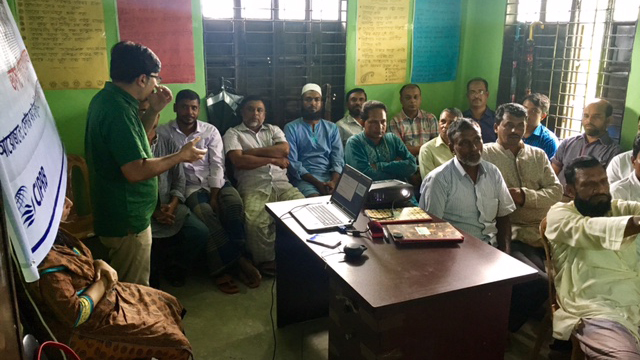Logic models
Method
A logic model provides a diagrammatic overview summarising inputs, outputs and outcomes of a planned initiative. It can be used when planning the implementation of a National Water Safety Plan, displaying the investments required for plan execution, the activities corresponding to plan milestones, and the short, medium and long-term changes anticipated to result from plan implementation.
At minimum, a logic model considers 3 major components:
1. Inputs
The investments and resources required for water safety plan implementation. This can include the employment of staff, the resources required for lobbying and advocacy, or the purchase of equipment and materials.
2. Outputs
The activities required for plan implementation to occur. This can include the development of educational resources, the provision of staff training to deliver an intervention, or the distribution of physical resources associated with a drowning reduction intervention, such as the distribution of playpens.
3. Outcome
Short-term outcomes are changes in the short-term behaviours, skills, knowledge, awareness and attitudes of a target population, evident immediately following plan implementation.
Intermediate outcomes are generally measured within a year of a plan implementation concluding and reflect what a target population has retained as a result. These can include changes in decision making processes or changes to policies.
Long-term outcomes are measured years post plan implementation concluding. These are more permanent changes that have occurred as the result of the plan on a larger scale. These can include various types of social, political, environmental and cultural changes.
Additional project components are able to be integrated to a logic model. Some examples include:
- List of priority features for the water safety plan
- A description of the context in which the plan will be implemented
- A list of external factors that may influence plan implementation
A simple method of documenting all these components is through the use of a standard Logic Model Framework Template. It is useful to have a logic model reviewed by stakeholders to ensure all priority areas are addressed and that all plan components are feasible.
Advantages
- A logic model can provide a comprehensive, easy-to-understand overview of a National Water Safety Plan and its implementation.
- It can be used for project advocacy, to justify funding requests and can assist with monitoring and evaluation.
- It can have a varying degree of complexity or simplicity.
- There are a number of freely available, differently structured logic model templates to choose from, or draw inspiration from.
Disadvantages
- Many unforeseen variables may affect the components included in a logic model.
- If changes occur to the inputs and activities listed, outputs and outcomes will be affected.
- The context the logic model is developed for may change overtime and cause certain aspects of the model to no longer be possible or relevant.
- The more detailed the logic model, the more likely small changes will affect it.
Context
A logic model can be made during the development stages of a National Water Safety Plan, to identify key milestones, map resource requirements and illustrate pathways to achieving goals. It can also be useful when developing timelines for plan implementation. Alternatively, a log model can be developed at the end of plan implementation, following evaluation, to summarise details of the plan and display plan outcomes in a single figure.
Examples
More information
Detailed guide to developing a Logic Model
Logic Model templates – free to access
Step 4
Define a framework

